Modeller af pesticideksponeringer i danske frugtplantager og væksthuse samt værnemidlers effektivitet
Summary
Introduction
The registration process for pesticides in Denmark is performed by the Danish EPA (Miljøstyrelsen). A part of this process is a risk assessment for workers handling pesticides at filling the spray tank, spraying and working in sprayed crops, re-entry.
However, there is a lack of useful exposure data from greenhouses and orchards for workers who handle pesticides during spray tank filling, subsequent spraying and at re-entry.
If the calculated exposure for workers exceeds the Acceptable Operator Exposure Level (AOEL), the use of Personal Protective Equipment (PPE) could be required, although the efficacy of the material of which the PPE is made of, such as protective coverall and normal clothing, is not described satisfactorily for the individual pesticides.
The efficacy of gloves when people work in greenhouses and agriculture under Danish conditions has been investigated earlier (Kirknel et al., 1997, Kirknel & Sjelborg, 2003).
The objectives of the project
To develop exposure models for Danish greenhouse and orchard workers when they load and spray pesticides and afterwards when they work in the sprayed crop (re-entry)
To investigate the efficacy of PPE under these working conditions
The design of the field experiments
Exposure scenarios in orchards ”loading and spraying” with a tractor-mounted and air-assisted mist blower, was the combined scenario we used in the orchard (apple). The PPE tested was coverall, normal work clothing (T-shirt or shirt and blue jeans) and protective nitrile gloves (heavy type). Workers were not allowed to rinse the gloves with water during the experiment, although this was a normal procedure under practical conditions.
The re-entry scenario was apple picking in the sprayed crop. The PPE tested was normal work clothing (shirt and blue jeans) and protective nitrile gloves (light type)
Exposure scenarios in greenhouses “loading and spraying” with a hand-held high-pressure rifle, was the combined scenario we used in the greenhouses. The PPE tested was coverall, normal work clothing (T-shirt and blue jeans) and protective nitrile gloves (heavy type). Workers were not allowed to rinse the gloves with water during the experiment, although this was a normal procedure under practical conditions.
The re-entry scenarios included a variety of different working scenarios in ornamentals and cucumber harvesting. The PPE tested was normal work clothing (T-shirt and blue jeans) and protective nitrile gloves (light type).
Modelling of loading and spraying
The models are based on potential exposure as the total exposure (in mg) that the test person collects on the body surface during the experiment divided by the dosage of active ingredient of the pesticide handled (in kg).
Modelling of re-entry
The models are based on transfer coefficients (TC cm²/h).

Potential exposure is the total exposure the test person collects on the work clothing, gloves and the body surface per hour.
Dislodgeable Foliar Residue (DFR) is the pesticide residue that is “easily rinsed off” (standardised method) the leaves at re-entry. The area is calculated as one-sided.
The field experiments
The orchards and the greenhouses that were used in the experiments are representative of the business.
Table 0.5. Key information for loading and spraying in orchards.
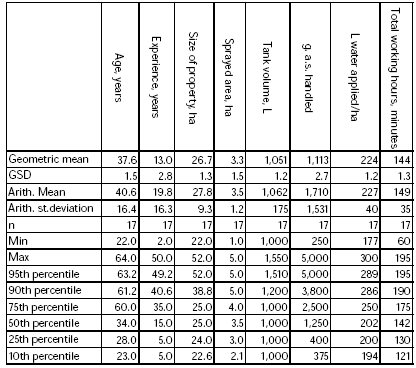
Table 0.6. Key information for re-entry in orchards.
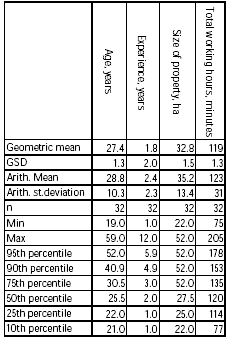
Table 0.7. Key information for loading and spraying in greenhouses.
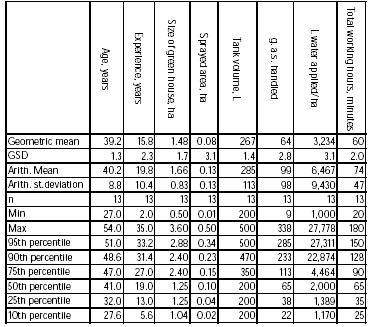
Table 0.8. Key information for re-entry in greenhouses.
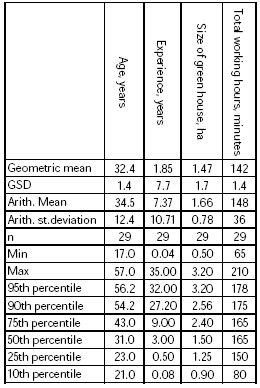
Table 0.9. Pesticides used in the experiments.
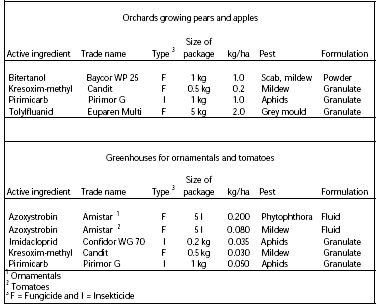
Chemical analysis
The chemical analysis was performed under the principles of a full quality control, using mass-spectrometry as the instrument of detection.
Conclusions
The figures indicated in the tables below are the “Minimum Variance Unbiased Estimate” (MVUE) when the set of data was either log-normally distributed or normally distributed. MVUE is the most preferred point estimate of the true mean, especially when sample sizes are small or when the geometric standard deviation is high
Table 0.10. Models for loading and spraying.

Table 0.11. Models for re-entry, TC.

Table 0.12. % Protection of PPE when loading and spraying.

*The percent protection of “Normal working clothing” is determined when using the clothing in combination with the coverall. In other words: A 98% protection of Normal working clothing in Greenhouses captures 98% of what has escaped the coverall. These comments are only valid when coverall is indicated to be used, as in “loading and spraying”.
Table 0.13. % Protection of PPE at re-entry work.

Values below the level of detection (LOD) was decided to be fixed at 0,5*LOD, which in general is an overestimation. The % protection indicated is therefore “worst case” and is probably higher than indicated.
Our observation recommends that the user of protective gloves makes sure that the glove fits tightly to the sleeve/bare arm in order to avoid exposure under the glove (for example with a rubber band). However this is not recommended by the ISO standard.
The results indicate that Danish orchard and greenhouse workers are fairly well protected during the handling of pesticides during spraying and at re-entry if they are wearing relevant PPE.
Version 1.0 September 2007, © Miljøstyrelsen.